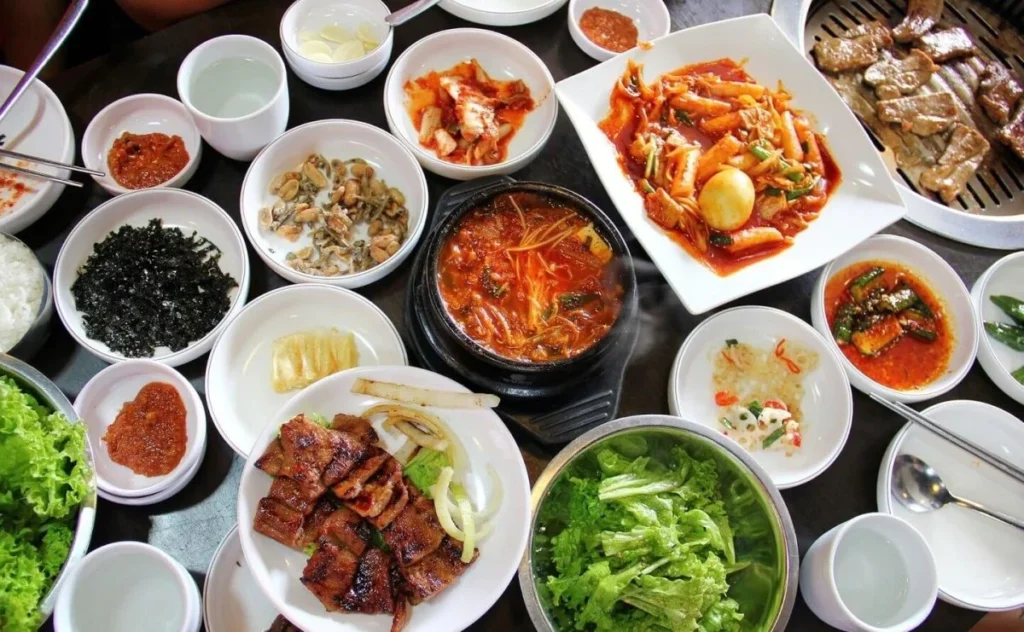When you arrive in Seoul, it won’t take long for you to find out just how intrinsic food is in Korean culture. To give you an idea, when meeting a friend we don’t just ask: “how are you?”, but rather: “have you eaten?” Almost every form of social gathering is centered around eating. Great news for a foodie! With the country surrounded by sea and mountains, we have a huge array of ingredients and dishes fit for every occasion. For example, you’ll always eat miyeokguk (seaweed soup) on your birthday, tteokguk (rice cake soup) on New Year’s, and yeot (traditional sweets) before an important exam. As in many Asian cultures, South Korean food is designed to be shared. Delicious main dishes (barbecues, stews, noodles, etc.) will be placed in the middle, accompanied by a table full of free banchan (side dishes). Sounds good? That’s why the country has turned into one of the world’s top foodie destinations. But, before you tuck in, take a read of my top 10 dishes you need to try on your first visit to South Korea.
Tteokbokki
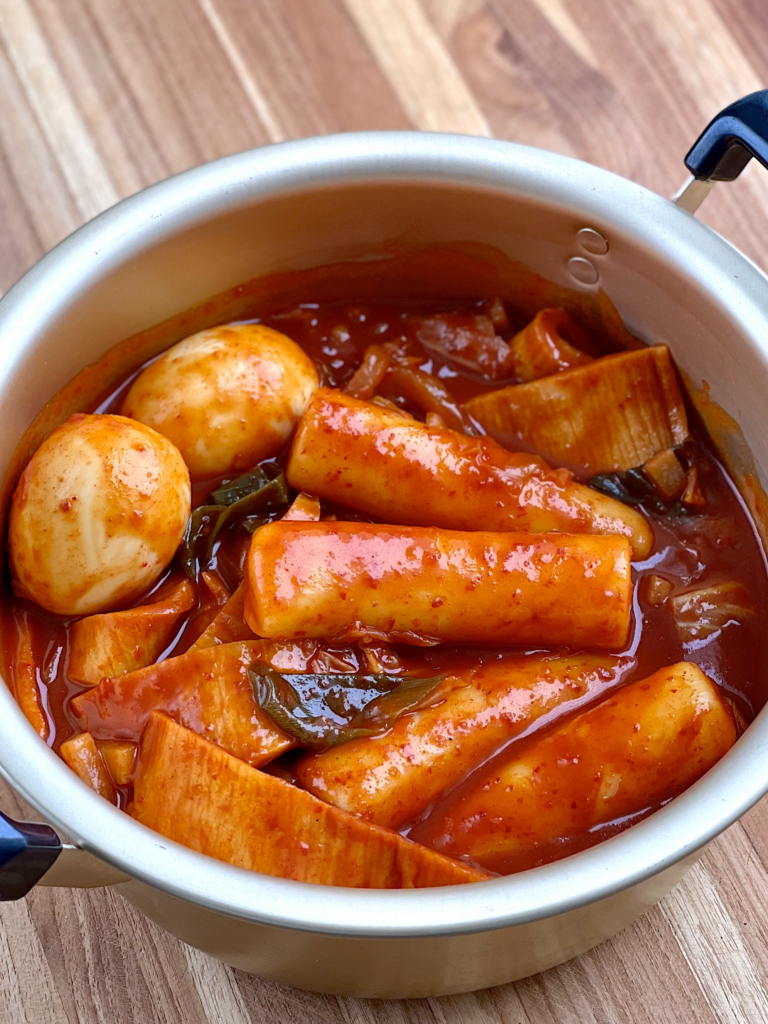
A beloved classic among South Koreans, tteokbokki holds a cherished place in the hearts and stomachs of many. It’s a ubiquitous sight on street corners, where stands dish out this spicy, hearty, and budget-friendly snack. Traditionally, chewy rice cakes (tteok) and fish balls (eomuk) are bathed in a fiery gochujang (chili pepper) sauce, though variations with soy or black bean sauce are also popular. The quintessential pairing is with soondae (blood sausage), South Korea’s equivalent of black pudding. For those seeking a more indulgent experience, restaurant renditions may feature additional delights like dumplings, fried vegetables, eggs, or noodles. Yet, on a chilly winter’s day, there’s unparalleled comfort in cozying up to a tteokbokki stand to ward off the cold.
Sachal eumshik
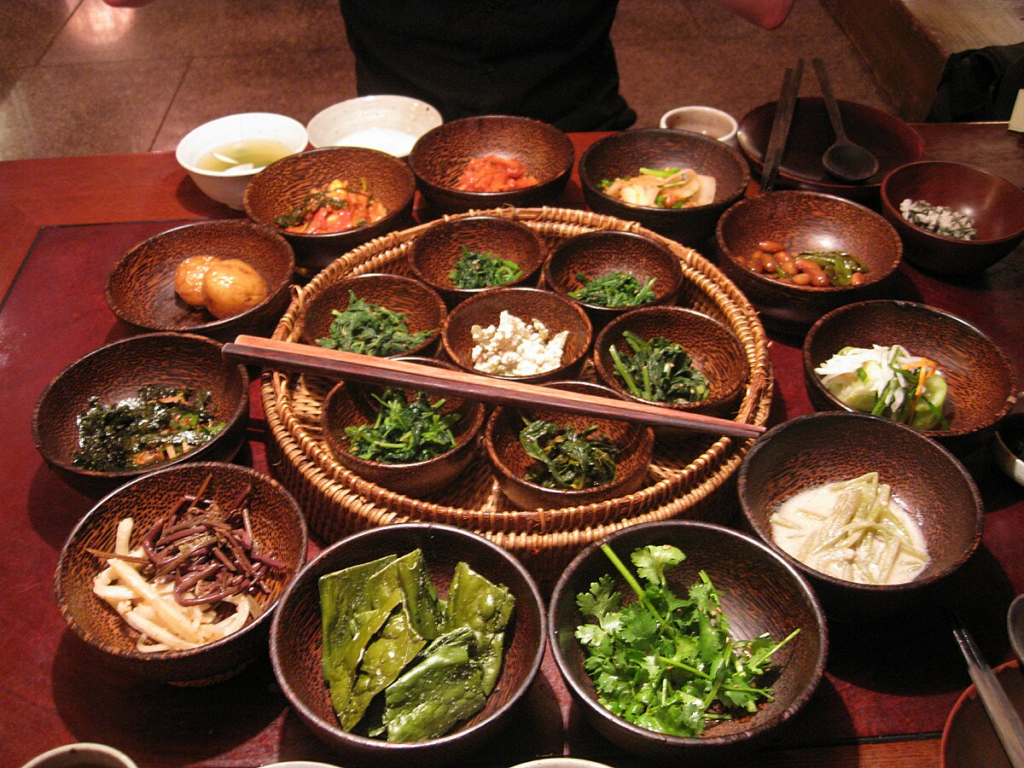
Have you had the chance to watch ‘Chef’s Table’ on Netflix? The documentary shines a spotlight on the traditional Korean cuisine enjoyed within Buddhist temples. It’s not merely about the food itself but encompasses a profound philosophy and mindset. Embracing a naturally vegan approach, these dishes are meticulously prepared with utmost consideration for all living beings and the environment. While some ingredients might seem unfamiliar outside of Asia, like bracken, lotus leaf, and radish greens, they come together harmoniously, especially when paired with glutinous rice, enhancing their flavors. If you’re seeking a refreshing detox amidst your culinary exploration of Korea, why not delve into learning these new recipes? It’s a chance to nourish both body and mind while discovering the delightful world of vegan South Korean cuisine.
Korean barbecue
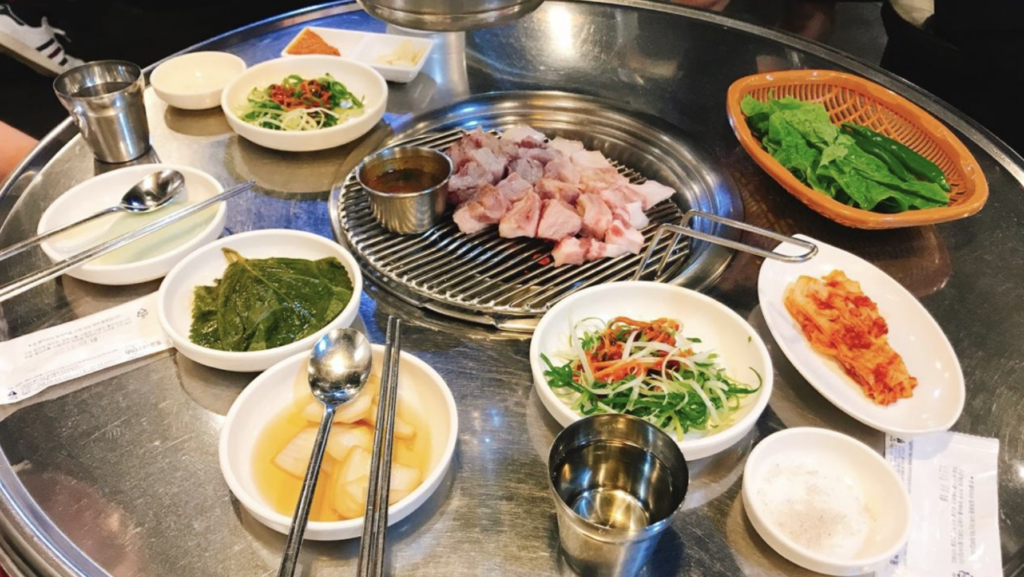
Korean barbecue has surged in popularity across the US and globally. However, the experience you’ll encounter in South Korea elevates it to a whole new level. Picture this: the grill sits at the center of your table, beckoning you to savor an array of beef, pork, duck, or seafood cuts. While samgyopsal (pork belly) reigns as the crowd favorite, my personal delight lies in yangnyeom galbi—succulent pork ribs marinated to perfection overnight. For an extra treat, venture to a seaside town and indulge in a shellfish BBQ right on the beach. Accompanied by sides like pickled onion or spicy scallion salads, the quintessential enjoyment comes from crafting a ssam (lettuce wrap). Simply grab a leaf, layer it with your choice of main, rice, sides, sauce, and relish in the symphony of flavors!
Hangang Ramyeon
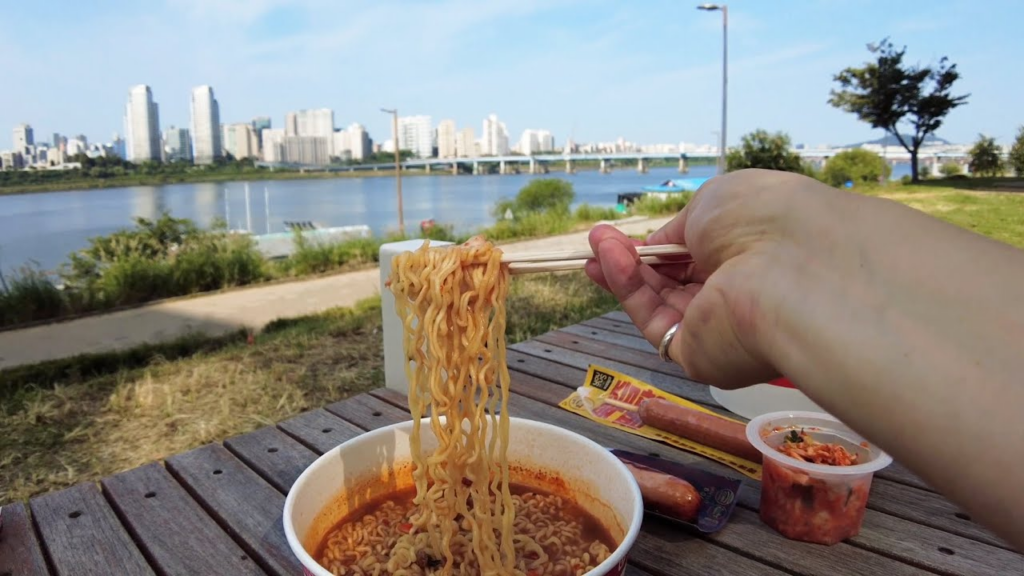
We’ve delved into the wonders of Korean street cuisine before, and when it comes to soaking in the essence of Seoul’s street food scene, few spots rival the Hangang (Han River). Here, locals converge in the riverside parks for leisurely picnics, serenaded by music, live performances, or simply the warm camaraderie of friends. While you can even summon a delivery—be it chicken, pizza, or jokbal—directly to your patch of grass, the quintessential snack of choice remains ramyeon.
Yes, you read that right—instant noodles. Step into any convenience store, and you’ll be greeted by a plethora of options. Simply select your desired flavor, and an automated machine outside will seamlessly prepare it for you. Add an egg for that extra touch of indulgence, and voilà—your outdoor feast is ready. Transport it back to your idyllic picnic spot, and suddenly, you’ll feel as though you’ve embarked on a camping adventure amidst the urban sprawl.
Budae Jjigae
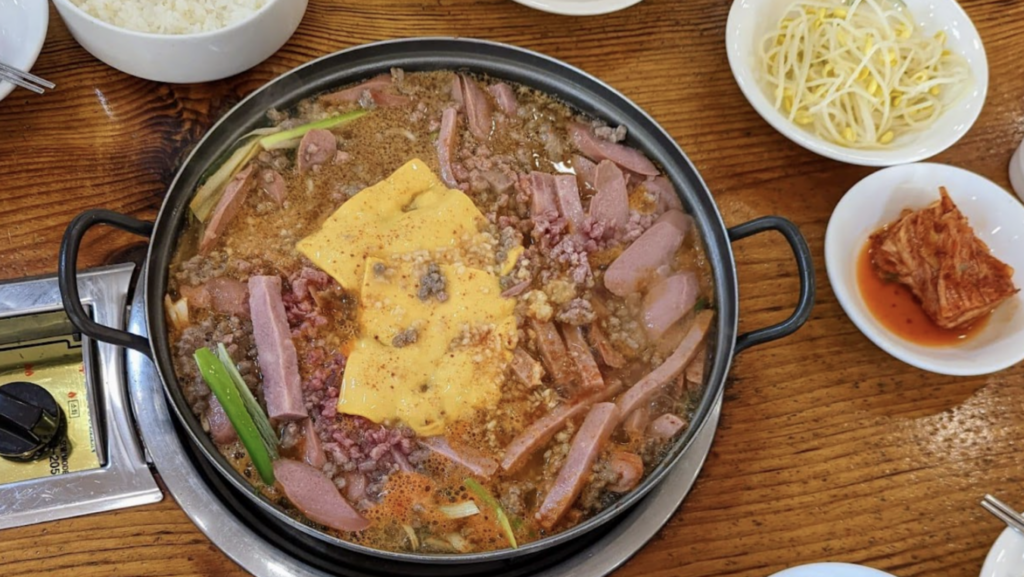
While South Korea boasts a diverse culinary heritage, its modern cuisine has also embraced influences from abroad, notably from the United States. Following their significant involvement in the Korean War (1950-53), US troops left an indelible mark on Korean cuisine, giving rise to fascinating fusion dishes.
One such dish is Budae Jjigae, aptly translated as “army stew” and affectionately dubbed ‘Johnson’, a nod to the stereotypical surname associated with American GIs. This hearty concoction melds a spicy Korean broth featuring kimchi, tofu, bean sprouts, and glass noodles with readily available US Army provisions: Spam, frankfurters, and baked beans. While the combination may seem unlikely, it produces a surprisingly delicious result that continues to delight Koreans and visitors alike to this day.
Jeon
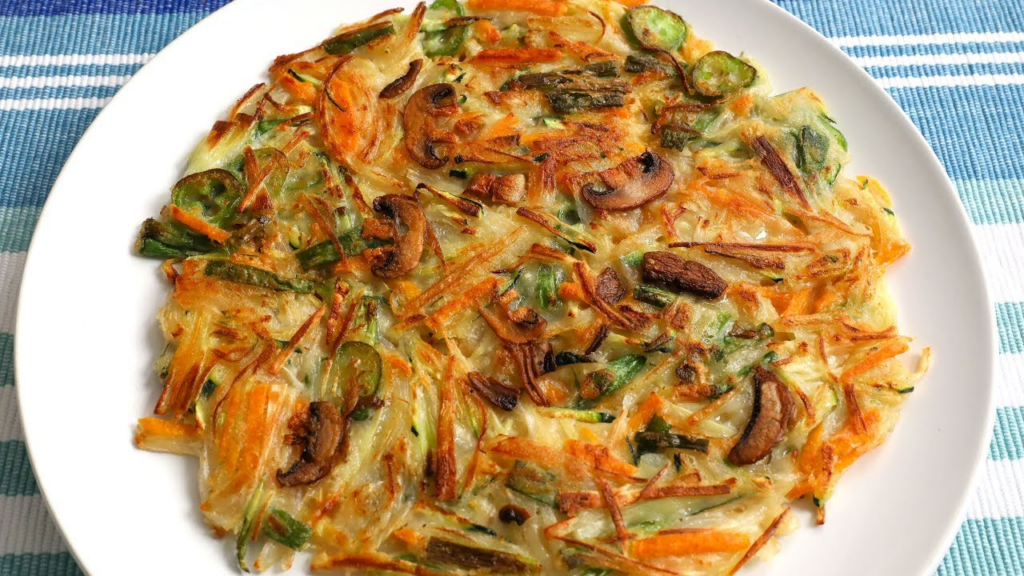
Picture a stormy day, snug inside your home, with the gentle patter of rain on the windowpane. It’s moments like these that draw Koreans to a particular comfort food. Jeon, often likened to a pancake or, more precisely, a fritter, is a savory delight filled with ingredients like kimchi, seafood, green onions, or chives. Legend has it that the sizzle of jeon frying in oil echoes the rhythm of raindrops outside. But you don’t have to wait for stormy weather to indulge.
Head to Seoul’s Gwangjang Market, where nokdu bindaetteok, made with mung bean instead of flour, offer an extra burst of flavor. These pancakes are generously stuffed with chopped pork, kimchi, bean sprouts, and aromatic herbs. Traditionally savored during national holidays, they pair exquisitely with a pot of Korean makgeoli, adding to the cozy ambiance of any day.
Naengmyeon
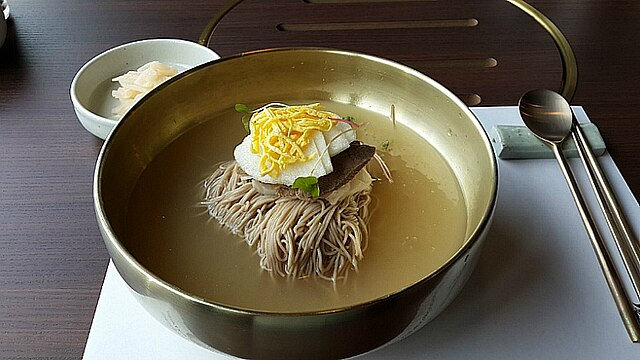
Describing naengmyeon as “You’ll either love it or you’ll hate it” captures its polarizing nature. Despite the initial skepticism towards cold noodles, once you’ve acquired the taste, they become an irresistible craving. Picture stepping into a restaurant on a scorching summer day and indulging in a refreshing bowl of buckwheat noodles immersed in an icy broth, adorned with tender slices of beef and boiled eggs. Enhance the experience with a dash of vinegar and mustard, infusing a delightful sourness that tantalizes your taste buds and offers instant relief from the heat. Naengmyeon joints typically complement the dish with mandu (dumplings) or soy-marinated meats, rounding out the meal perfectly. Notably, it’s also renowned as a staple dish in North Korea, with select establishments south of the border specializing in Pyongyang-style naengmyeon.
Chimaek
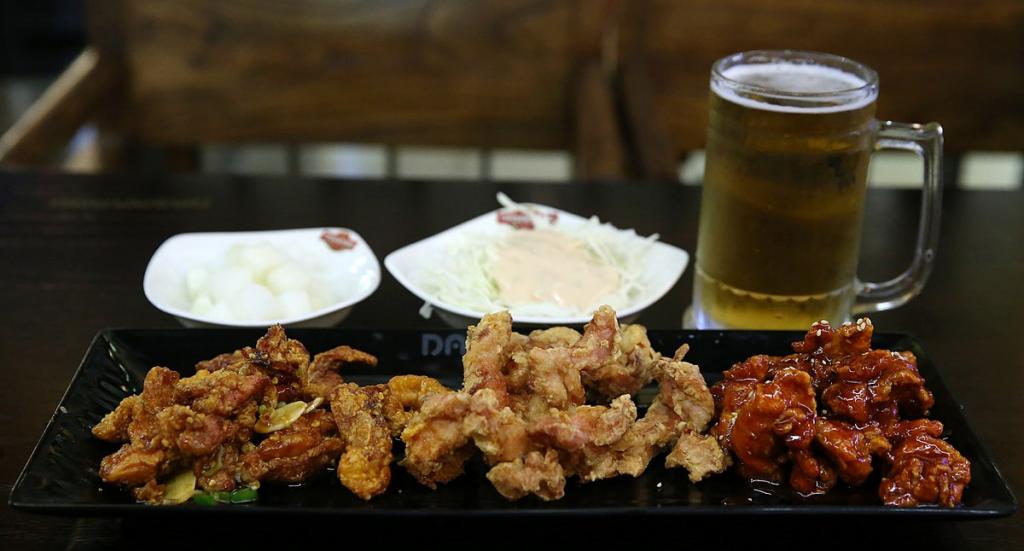
Chimaek, a delightful fusion of “chicken” and “maekju” (beer), is truly a heavenly pairing. This iconic combination has ingrained itself into South Korean pop culture since the 1970s, gaining even more traction after the electrifying 2002 FIFA World Cup hosted jointly by South Korea and Japan. Korean-style fried chicken offers a unique twist compared to its Kentucky counterpart.
Typically presented as either a whole chicken or halved, it boasts a crispier batter infused with a plethora of tantalizing sauces, ranging from spicy to sweet, soy, honey, garlic, and onion. Explore each distinct flavor profile and cleanse your palate in between with the invigorating tang of pickled radish served alongside. Whether enjoyed amidst the fervor of a sporting event or as a satisfying conclusion to a demanding workday, one taste of chimaek will forever evoke thoughts of Korea, overshadowing any association with Kentucky.
Haejangguk
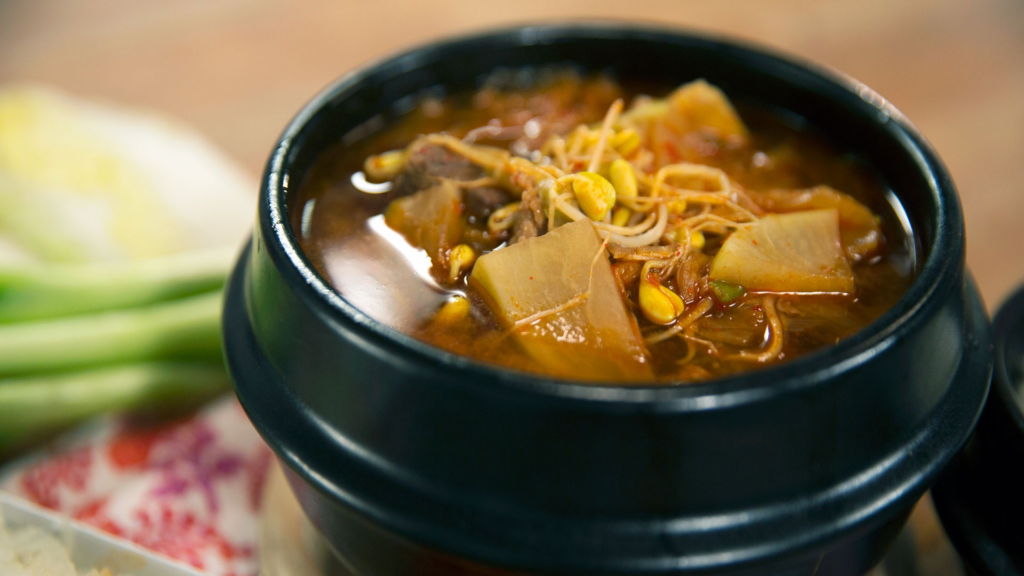
Haejangguk, also known as ‘hangover soup,’ is a culinary lifesaver crafted specifically to revive spirits after a night of revelry. Embraced both as a nightcap and a morning-after remedy, Koreans vouch for its effectiveness, deeming it suitable for any hour of the day.
Among its variations, kongnamul gukbap (beansprout soup) stands out, particularly cherished in the bustling city of Jeonju. This version boasts a comforting base of dried pollak, offering deep nourishment, hydration, and a boost of iron. Its zesty clear broth brims with bean sprouts, green onion, garlic, and rice, forming a harmonious accompaniment to the Korean spirit, soju.
Yakgwa
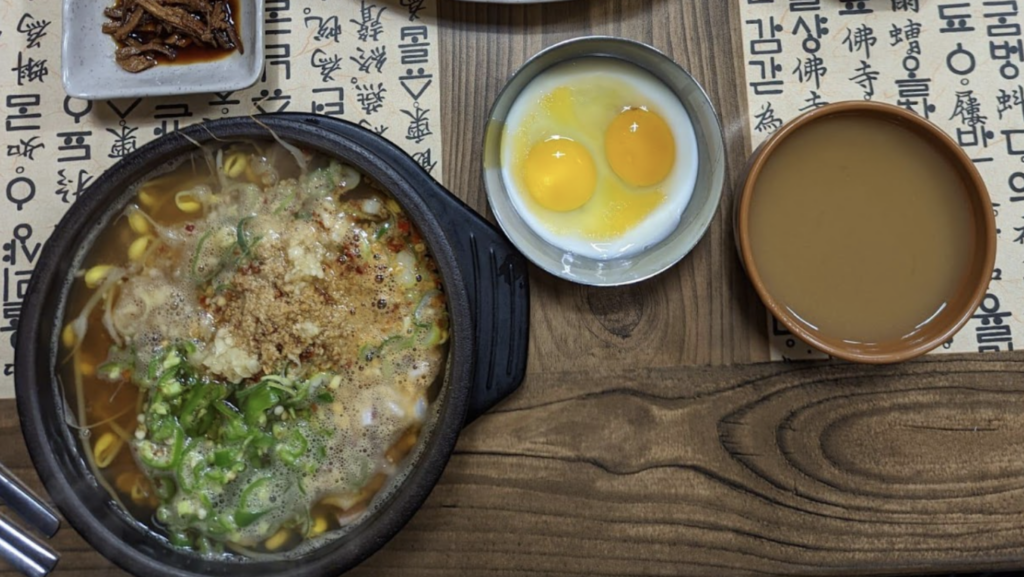
What better way to conclude your culinary journey than with a delectable dessert? While food trends in Seoul can shift as swiftly as fashion trends, certain classics endure, such as yakgwa, a cherished traditional cinnamon pie. Unlike many traditional Korean desserts, which tend to lean towards subtlety in sweetness, yakgwa stands out with its indulgent flavor reminiscent of a glazed doughnut.
Crafted from a blend of flour, sesame oil, ginger, honey, and a hint of alcohol, the dough undergoes a slow simmer in grain syrup before being delicately fried to achieve a rich golden hue. Often fashioned into intricate floral shapes and garnished with sesame seeds, its familiar taste pairs harmoniously with bitter beverages like black americano or tea, making for a satisfyingly balanced treat.
